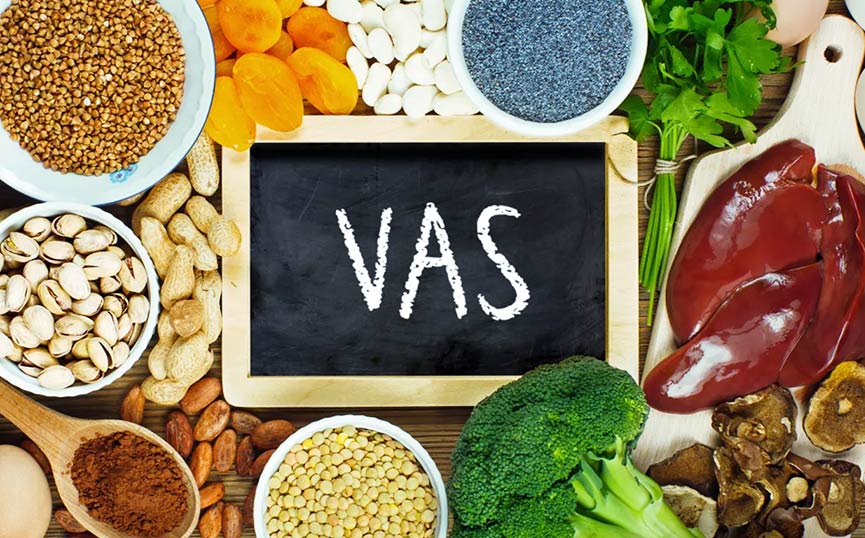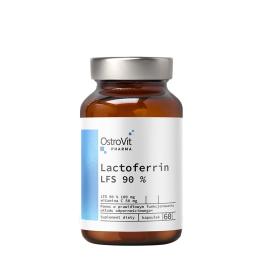All about iron
Iron is an essential trace element. Iron is involved in the transport of oxygen in red blood cells. Haemoglobin, the protein found in red blood cells, is responsible for oxygen transport. Few people know, but iron deficiency is associated with symptoms such as fatigue, reduced concentration and frequent infections.

What is iron?
Although it is present in small amounts in our body, it is one of the most important micronutrients in our diet. Most of the iron in the body is in its active form, in haemoglobin, myoglobin or enzymes. Iron is an essential component of haemoglobin, the oxygen-carrying component of red blood cells. This trace element is also necessary for myoglobin, which is involved in the oxygenation of muscles, but it is also contained in several enzymes and certain compounds of the immune system. At certain stages of life, e.g. pregnancy, breastfeeding, childhood, the body's iron requirements increase. Iron is found naturally in many foods, such as lean meats, seafood, white beans, lentils, spinach, peas, nuts and dried fruit.
The effect of iron
It is essential for the formation of hemoglobin and myoglobin, and plays an important role in oxygen transport and biological oxidation in cells. Iron contributes to the body's energy supply, the functioning of the immune system and the nervous system. Even a slight iron deficiency can reduce the ability to concentrate. It plays a role in the body's energy production processes, being a central component of enzymes involved in oxido-reduction processes. In addition to its important role in oxygen transport, it participates in the structure and functioning of enzymes, in its absence not only concentration deteriorates, but the body's defense capacity also decreases.
Iron deficiency
Although it rarely occurs with a balanced diet, iron deficiency is surprisingly common in developed countries. There are several reasons for its development. At certain times of life and in certain situations, the body's need for iron increases, e.g. pregnancy, breastfeeding, rapid growth in childhood. Since the body also loses iron with blood loss, it is forced to use the body's iron reserves during various bleeding conditions, e.g.: bleeding from the stomach and intestinal tract, surgeries, accidents, frequent nosebleeds and heavy menstruation in women. Although iron deficiency is more common in women, deficiency occurs in both sexes. Deficiency is more common in dieters, vegetarians or vegans, and athletes. Infants, young children and adolescents are also at risk of iron deficiency, as well as the elderly due to poorer absorption and utilisation of iron.
The development of iron deficiency
Normally, the body loses 1-1.4 mg of iron per day. If for some reason we don't have access to the right amount of iron, or our needs increase, the body will first turn to iron stores. In the short term, low iron intake causes no symptoms, but as stores are gradually depleted, serum iron levels begin to fall. Iron deficiency initially has no symptoms, but later, as iron reserves decrease, the rate of healthy red blood cell production also decreases. The size of the red blood cells changes, they become smaller, so they are less able to carry oxygen. This is called iron deficiency anemia. Symptoms of iron deficiency appear: fatigue, shortness of breath, dizziness, reduced physical and mental activity and reduced immunity.

Excessive intake of iron
Not only iron deficiency but also too much iron intake can be dangerous. Prolonged high iron intake reduces the utilisation of zinc, copper and calcium, increases the risk of infections and promotes bacterial overgrowth. High doses of iron supplementation can cause stomach upset, constipation, nausea, abdominal pain, vomiting and fainting. And supplementing with extremely high doses of iron can lead to organ failure, coma, seizures and even more serious problems.
Required quantity
The need varies depending on age and increases during pregnancy and breastfeeding.
Recommended daily intake of iron for adults (RDI):
- For men: 8 mg
- For women: 18 mg
- During pregnancy: 27 mg
- During breastfeeding: 9 mg
As you can see, the need for iron is much higher for women, this can be explained by menstrual bleeding, so the female body is more exposed to the risk of iron deficiency. The tolerable upper limit is 45 mg. Take care not to exceed the upper limit to avoid side effects. Of course, your doctor may prescribe more than the above limits if you need a higher dose to treat iron deficiency for a period of time.
It is good to know that iron can be better utilised by the body if it is consumed with foods containing vitamin C (e.g. citrus fruits, strawberries, peppers). Iron supplements can interact with antibiotics or other medicines, so be sure to check with your doctor if you are on any medication or want to start long-term iron supplementation.



